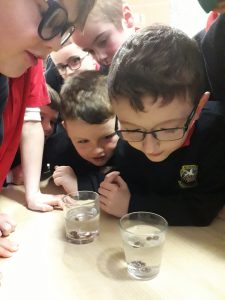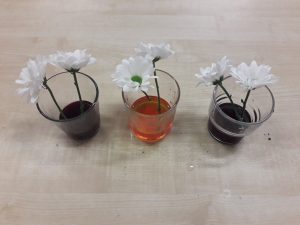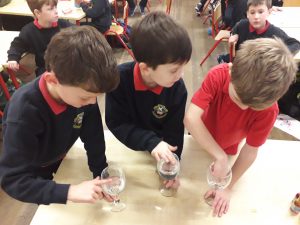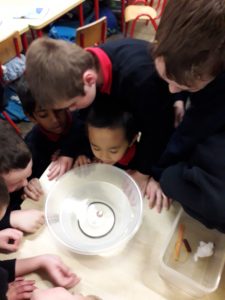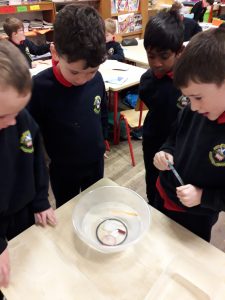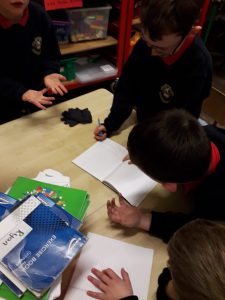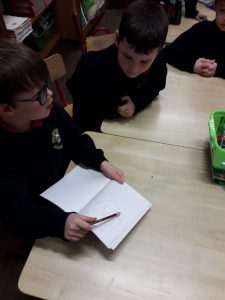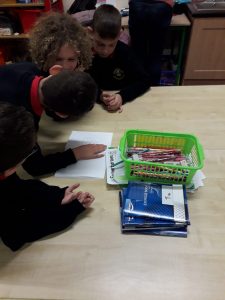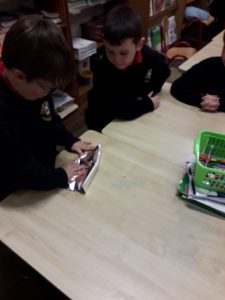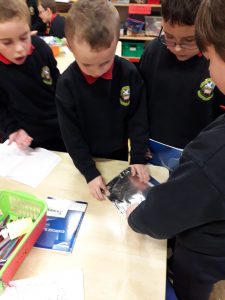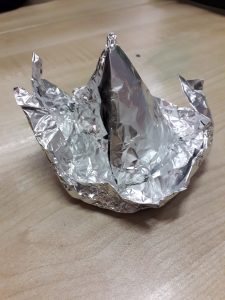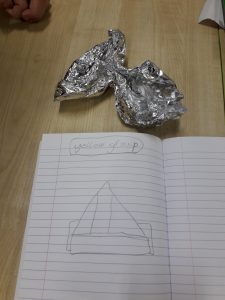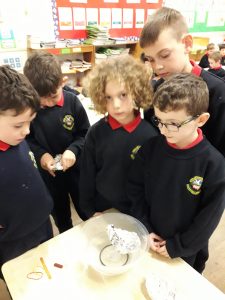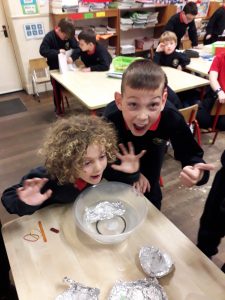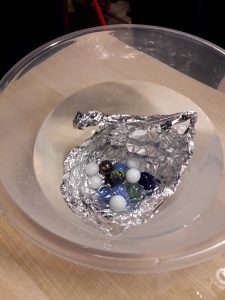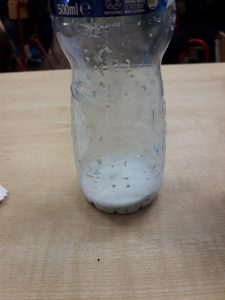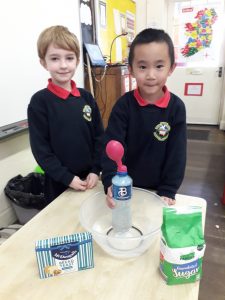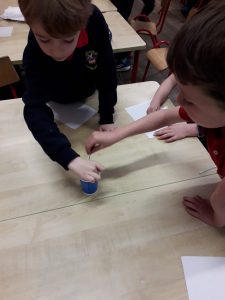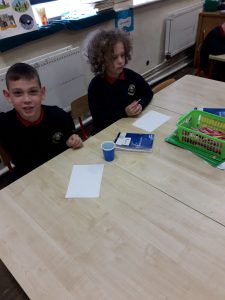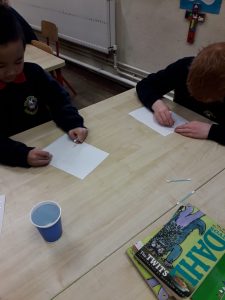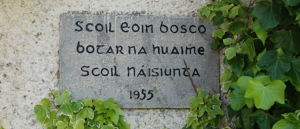Science week this year was held between 10th and 17th November. Here are some of the experiments we carried out in class.
Dancing Raisins
We put fizzy water in a cup and then added some raisins. They looked like they were dancing!
The raisin is denser than the water. However, the bubbles get trapped by the grooves in the raisin, helping it to float back to the surface. When the bubbles pop, the raisin sinks back down.
Experiment with Flowers
We put white flowers into a glass. We added water and different food colouring into each glass. We left it for a while and noticed that the petals had changed colour because of the food colouring. This is because the water and food colouring travelled up the stem of the plant into the leaves and flowers.
Singing Glass Experiment
When we hit a glass, it makes a sound because it vibrates. When you run a wet finger around the rim of a glass it repeatedly sticks and then slides. This makes the glass vibrate and produce a sound. When you do this with water in the glass, both the water and the glass vibrate. Changing the amount of water in the glass changes the way it vibrates and this changes the note you hear.
Floating and Sinking
The boys got to predict what they thought would float and what would sink. Then they got to test them.
STEM Challenge: Build a boat using tin-foil that will hold marbles
First, the boys planned what their tin-foil boat was going to look like. All the boys worked so well together.
Next, they got to create their ideas.
Then they tested their idea. They counted how many marbles the boat would hold until it sank!
This boat was the best as it held 18 marbles before it sank!
Inflate a Balloon with Yeast
We put 2 tablespoons of dry yeast, 1 tablespoon of sugar and 2-3 tablespoons of lukewarm water into a bottles. Next, we stretched the balloon over the mouth of a bottle. We waited a little while and the balloon started to inflate!
The yeast is a microscopic fungus that converts sugar into carbon dioxide. The bubbles they saw were tiny bubbles of carbon dioxide gas that the yeast was producing as it ‘ate’ the sugar. We added lukewarm water because yeast thrives in this type of environment. The balloon kept getting bigger and bigger because the yeast was continuing to react, it converted more and more sugar into carbon dioxide gas. This gas was trapped in the balloon, making it inflate as if by magic!
Secret Messages
We used lemon juice to write a secret message on a piece of paper.
